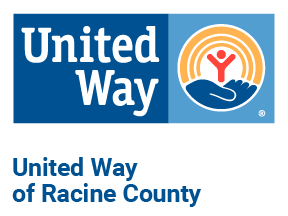
This commentary was originally published in the Racine Journal Times.
September 19, 2018 — In 2016, nearly half of Racine County households—40 percent—could not afford basic needs such as housing, child care, food, transportation, and health care. Of this number, 13 percent are households that live in poverty, and another 27 percent are ALICE households.
ALICE stands for Asset Limited, Income Constrained, Employed, otherwise known as the working poor. ALICE households reside in the financially unstable gap between poverty (federal rates $11,880 for a single adult, $24,300 for a family of four) and the basic cost of living (in Wisconsin, $19,848 for a single adult, $61,620 for a family of four). These households live paycheck to paycheck, may work two or more jobs, and often don’t know where their next meal will come from. They are one emergency away from financial disaster. With no savings cushion, they may have to pay a sudden medical or car repair bill with rent or grocery money. Since financial support resources often do not assist those above the poverty threshold, ALICE households live in a cycle of emergencies—working hard, not earning enough to attain financial stability, and ineligible for benefits afforded to those in poverty.
Compared to other southeastern counties such as Walworth or Kenosha, Racine has a slightly higher proportion of ALICE households. In Kenosha, ALICE households are at 25 percent, and poverty households are at 13 percent; in Walworth, those numbers are 25 percent and 14 percent respectively.
The rate of ALICE households is highest among Racine County residents 65 and over, at 40 percent (compared to 28 percent for single/cohabiting households and 15 percent for families with children). Data from the National Institute on Retirement Security shows that the median retirement account balance is $12,000 for near-retirement households. When social security is not enough to provide for the remainder of these households’ needs, this often forces them to stay in the workforce longer with little hope of retiring comfortably.
By 2025, United Way’s goal is to increase the number of financially stable Racine County residents by 2,000. United Way is working hard to support ALICE families as well as households in poverty. Our VITA program offers free tax filing to those with an income of $54,000 or less, and the Financial Fitness Network educates our community on managing finances.
We are also seeing solutions from the county and state. Racine County’s Uplift 900 program will bring job training and support to neighborhoods with increased rates of unemployment. Its goal is to employ 900 jobless residents, lowering Racine County’s unemployment rate from 4.9 percent to 3.5—on par with the state. The city of Racine has launched Racine Works, which trains residents to better fit the job needs of Racine. This program has already received $1.5 million in support from DWD’s Wisconsin Fast Forward grant, the City, the Gateway Foundation, and UMOS.
The second United Way ALICE report was just released August 28, two years after the original ALICE report. Conditions have improved; unemployment rates in Wisconsin have steadily declined since 2010, and the median hourly wage has risen for the majority of Wisconsin’s most common occupations. However, the rising cost of living outpaces wages. From 2010 to 2016, the cost of living increased 18 percent for families and 24 percent for individuals in Racine County. Our community has a lot of work ahead to support ALICE, but I am proud to see our organization and our partners moving the needle in the right direction by working to intentionally help ALICE individuals and families.
To learn more about ALICE, visit UnitedWayRacine.org/alice.
Rodney Prunty is the president of United Way of Racine County and of the board of United Way of Wisconsin.

Website by: OneEach Technologies
Sitemap | Login